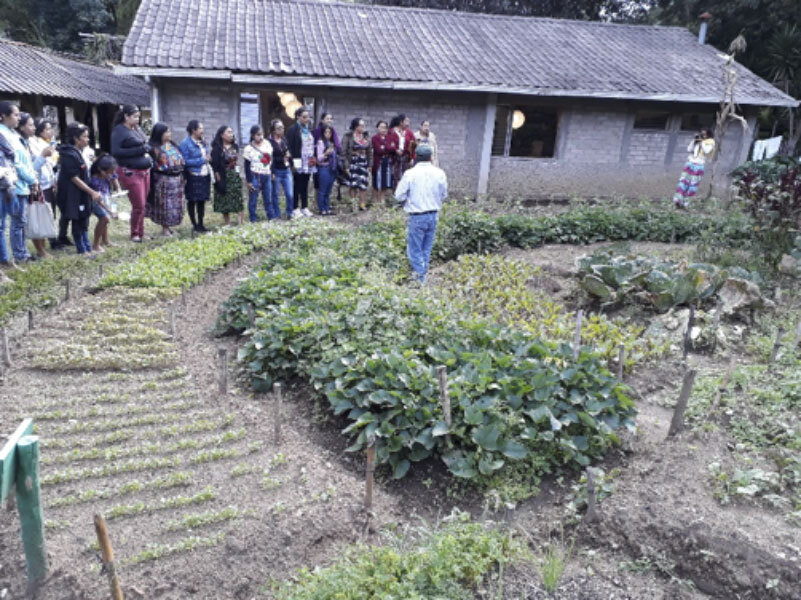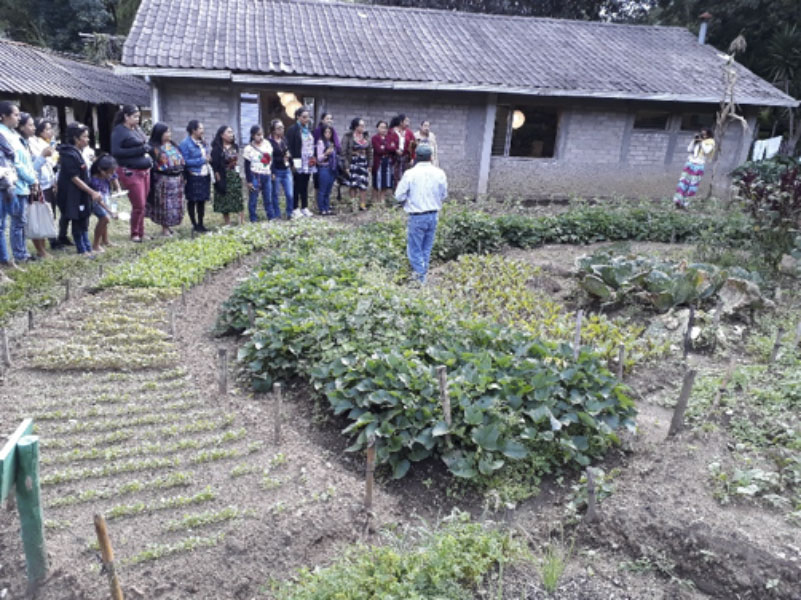The year 1932 is forever marked in the memory of El Salvador’s indigenous peoples. Known before as Cuzcatlán, which means «country of medals» or «City Jewelry» because of its beautiful and fertile land with vegetation, hills and volcanoes, El Salvador has seen continuous struggles for land beginning with the expropriation of indigenous territories by conquerors. Agustín Farabundo Martí led a revolt of pick, shovels and “machetes” to gain access to the land but was suppressed by the Salvadoran army in 1932. An estimated 30,000 indigenous persons were killed, the largest ethnocide in the country’s contemporary history which pushed indigenous people to continue struggling from the underground.
On June 12, 2014, the Salvadoran State reformed Art. 63 Inc., 2nd. of the National Constitution of the Republic, recognizing the existence of indigenous peoples. Indigenous organizations drafted the National Plan of Indigenous Peoples of El Salvador – «PLANPIES,» an articulated and coordinated process between the Government, indigenous peoples’ organizations and the United Nations.
The strength and wisdom of indigenous women leaders have always been vital to the struggle for the peoples’ welfare as shown by Betty Perez from the Coordinating Council of Indigenous Peoples of El Salvador- CCNIS. She said, «It is an important moment to talk about wellness among us, from the perspective of the Nahuatl-Pipil, Lencas and Cacaopera peoples. We need to strengthen our lifestyles, to seek how access to lands and territories is guaranteed, and to interrelate not only materially, but also spiritually with nature.»

To strengthen life systems, the capacities of indigenous communities must be strengthened. Thus, community organizations were formed and the National Indigenous Coordinating Council of El Salvador-CCNIS was created, together with the Association Communal Lenca de Guatajiagua or ACOLGUA, the Lenca Communal Association of Chilanga or ACOLCHI, and the WINAKA Kakawira Association.
Activities were shared through regional meetings; organized “circles of the word” were venues to share experiences and knowledge to strengthen the organizations; intergenerational dialogues tackled «good Indigenous agricultural practices to face the effects of Climate Change and build capacity of Indigenous communities;» and international instruments on the Rights of Indigenous Peoples, Environment and Climate Change were learned.necessary, not to see nature as a means to make wealth.” Amadeo Martinez of the CCNIS said, «In most cases, access to land by indigenous people is limited,» adding that «the situation is even worse for women who do not enjoy that right. Families recognize inheritance of land rights for the firstborn male; a woman even if first born, is not taken into account, and the inheritance is given to the first son, even if he is one of the youngest.»
They talked about their roots, practices and knowledge of their grandparents and ancestors in agriculture, fishing, fruit gathering, midwives, use of traditional medicine, their relationship with the environment.
They shared ideas on native seed preservation, a traditional practice that ensures strong seeds that adapt to climate changes, generate diversity and a way of conserving «our soils, customs, maintaining the deep relationship we have as guardians of forests and rivers.”
Spiritual guides, Councils of Elders, midwives, “accountants of time,” elderly and youth, women and men gathered and talked about conservation, protection, and restoration of Mother Earth, indigenous identity, traditional knowledge and practices; calendars to perform their ceremonies; location of their sacred places or altars; and efforts to revitalize their language and keep stories and dances.
They liked most the creation of demonstration plots, recovery of native seeds, and shared experiences on land use to reduce disaster risk, especially the effects of rainfall or droughts on crops and food.
Olga explained that women’s participation in the meetings was important for “their visibility in the different spaces of participation, as well as their empowerment to defend their rights at the community and national level.” There has been progress with community activities to support women who she believes “…should be visible in programs and policies that develop skills and knowledge, and putting these into practice, as an inheritance from the ancestors.»
Néstor, a youth, noted that the meetings enabled indigenous leaders to reactivate the regional Council of Lenca and Kakawira – COPULENKA to improve the indigenous communities’ quality of life. Ana saw these leading to the protection and conservation of sacred sites, and the revitalization of ceremonies for the good of indigenous people.
El Salvador’s indigenous people have taken steps towards their recognition as full citizens and proudly demonstrated that they are carriers of ancestral knowledge that protect, conserve and restore natural resources. They continue to work for the sustainability of their communities and are asserting the constitutional rights to be recognized as indigenous people. They will adopt policies to maintain and develop their ethnic and cultural identity, worldview, values and spirituality.
[1] Vila de Lara, Claribel Alegría: mujer que se compromete. Cenizas de Izalco: obra que delata
The conversations, meetings and circles of the word were held under the Project «Good Indigenous Agricultural Practices to Address the Effects of Climate Change and Capacity Building for Indigenous Communities» implemented by the Salvadoran National Indigenous Coordinating Council (CCNIS) with support from the Pawanka Fund.

